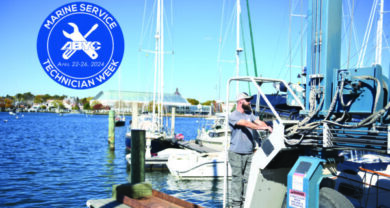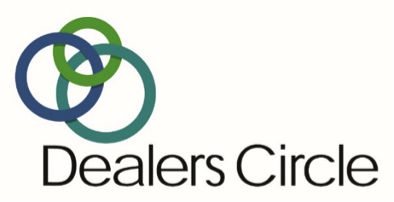Paints & Coatings
As the marine industry goes, paints and coatings is not a segment that sees a great deal of volatility.
Reversal of fortune and dramatic innovation can be somewhat out of place in a market where product registration can take up to three years, and sinking boat loads of money into research and development can be a risky proposition given the ever-changing nature of government regulation.
But innovation does occur, both in the market and around it. New products are being developed, and so is a new system that may revolutionize the way in which they are applied.
And recently an element of uncertainty has entered the manufacturing equation, catching some off-guard and leading others to wonder what will happen next?
Copper Crisis
The price of copper has skyrocketed recently. An important and frightening development for companies in paints and coatings, because the metal is worth its weight in gold as an ingredient in antifouling products, used to keep shells, weeds or algae from growing on immersed surfaces – such as boat hulls.
Copper is the key to combating fouling – which occurs when those materials accumulate on the underside of a boat, degrading its fuel efficiency and causing a loss of speed and maneuverability.
“Copper is the main biocide in antifouling paints, 97 percent of the products we produce contain copper,” said Erik Norrie CEO of Florida’s Sea Hawk Paints. “[The price increases] came out of the blue and went through the roof. It’s got us all pretty worried.”
Norrie says the increases may mean his company will be paying as much as $14 or $15 more to produce a gallon of paint, and that consumers could see increases of $22 or $23 per gallon for the finished product.
John Ludgate, vice president of sales and marketing for Petit Marine Paint, said the price of copper has doubled in the past 18 months, and that while his company won’t raise its prices just yet, things may be different come this summer.
“The spring is obviously our biggest season for selling products, so we wouldn’t raise prices now, but we may in June or July,” Ludgate said. “We are hoping that [the copper prices] are kind of like a pendulum, and we’re just trying to hold on and hope things settle down.”
It could be a long wait.
Chinese demand is the driving force behind price increases, according to Skipp Klatt, vice president of sales at American Chemet, one of the largest worldwide suppliers of copper to the marine industry.
The world’s most populous country is attempting to modernize its infrastructure with improvements in areas such as telephone service, and has been purchasing large quantities of scrap metals – including copper and steel – which has produced a similar price spike in that market.
Klatt believes the elevated demand from China, and other emerging third-world nations, will continue to keep prices elevated as well.
“I think this is going to last a number of years, there is a real concern that the price of copper, now at $1.35 per pound, may get as high as $2 per pound,” Klatt said. “It’s very difficult to say where the price is going to go.
“The previous high, six years ago, was $1.50 to $1.60 per pound. I perceive this time that we will challenge that price, but probably not surpass it.”
Klatt says mines and smelters, now dormant due to concerns about profitability, may be brought back on line by suppliers, if demand for copper continues. But that would take months, possibly years.
Business is booming
If copper prices do remain high for the foreseeable future, they could cloud what otherwise seems to be a fairly rosy forecast for a paints and coatings segment not used to lots of ups and downs.
“Boats need to be painted every 12 to 24 months, because of that need we don’t really see huge changes in the market,” said Bob Donat, vice president of marketing for Interlux Yacht Finishes. “The first months of 2004 have been very good for us.”
They’ve been good to Sea Hawk Paints also, where Norrie says business is up 33 percent over last year.
Manufacturers say concerns last year about the war with Iraq, have given way to improved economic numbers and more consumer interest in their products.
And while the Environmental Protection Agency doesn’t allow new innovation in this segment of the marine industry to simply jump from the drawing board onto the shelves, technological advances are taking place. Some involve paints and coatings themselves, while one Florida company believes its invention signals a fundamental change in the way those products are applied.
Automated boat painting
It’s called Visions East. “Visions” because the company believes its ideas to be visionary. “East” because, “If you look to the East it’s the dawn of a new day,” company founder and president Steve Morton says.
Visions East bills itself as a “Robotic Marine Solutions Company,” and its first solution involves paint and coatings.
The company has patented, and already sold its first computer-controlled robotic yacht-painting system. A system that does exactly what its name implies – uses robots to fully automate the process of applying paints and coatings.
The idea and technology isn’t exactly new – just new to the marine industry, Morton says.
“In the automotive industry there hasn’t been a hand holding a spray gun on an assembly line for the last 20 years to my knowledge,” Morton said. “The marine industry uses computer controlled engine management and computer controlled engine design. The one area that’s been left in the backwater is the coatings part.
“We’re not developing a new technology, we’re just incorporating existing technologies. I’ve been an active yacht painter for over 25 years. Visions East was an outgrowth of my recognizing the inefficiency in the marine industry and the need for a better way of doing things.”
An unidentified Swedish company has already purchased a 54-meter yacht system from Visions East and Morton said his company has had “strong interest” from the “largest yacht builders in the world,” although he’s not yet ready to name names. He says the United States Navy also has an interest.
But while his technology is currently only being developed for yachts and ships, Morton believes the day of robotic application of paints and coatings for boats of any size is fast approaching.
“I’d say within 10 years you will have robotic systems that you can bring your 25-foot Aqua Sport into and have it painted,” Morton said. “Look at cell phones. They were very expensive when they started, only the affluent had them. People would have $500 to $600 phone bills. But with advances in technology the cost came down. This will do the same thing. Technology, as it matures, cuts costs.”
How much time will this robotic process save?
Morton says that while fairing and painting a 50-meter yacht might currently take between 14-16 months, the Visions East system would “reduce that time significantly, in the 50 percent range.”
Morton believes robotics can give consumers the three things they most crave when buying a product – something that’s cheap, fast and good.
“You can’t have all three with human labor,” Morton said. “Fast and good costs money. Cheap and good is the project you do in your spare time. But with automation (all three) are possible. The machinery is expensive, but it’s capital equipment and you can depreciate it.”
Robotics will also allow companies to move to three-shift, 24-hour operation if they desire, and Morton says the Visions East high-volume, low-pressure application system will be more environmentally friendly, with an 80 percent transfer efficiency and less overspray.
“Right now, half a gallon (of paint) goes on the yacht, half goes on the cars in the parking lot,” Morton said.
Morton believes automation in the application of paints and coatings is long overdue, and will prove revolutionary to the industry.
“Were jumping from not quite the stone age, but a very manual and technical process that was not inaccurate, but was slow, into the 21st first century,” Morton said. “There isn’t any middle ground for this leap. It’s like going from a Model T to a Ferrari without any Edsels in between.”
TBT free
It’s the kind of leap rarely seen in the production of actual paints and coatings themselves.
Change is not always a good thing in this segment of the marine industry, especially when it comes to paint.
“Some of our products are designed to last for 10 years, if you discontinue something, like a certain color, you’re going to upset a customer who’s had a boat that color for the last 20 years,” said Donat. “We’re not like a cell phone company, bringing out something new every year.”
However, anti-fouling products certainly seem to be one area where innovation is currently at its height.
In the past, antifouling paints using tributyltin (TBT) biocide were seen by many as the best available solution to the fouling problem. But when TBT was found to be harmful to the environment, paint and coatings companies began looking for safer alternatives.
Interlux, which Donat said is the largest paint company in the world, thinks its Micron 66 is just such a product.
“Micron 66 is a long lasting self-polishing copolymer that is formulated to provide powerful antifouling performance without using TBT,” Interlux said in a press release. “We are very excited to be able to provide to owners of boats of any size the level of antifouling performance previously only available through TBT-based antifouling paints.”
Donat calls Micron 66 “innovative” but said that because of all the regulation, innovation takes time.
“We will have been working on products for three or four years before the consumer sees it,” Donat said. “We’re at the mercy of the EPA. When we develop something, we’re always looking at the regulation side. ‘Where will regulations be in two years?’ for example.”
Red tape jungle
Because Interlux sells its products worldwide, the company also has to consider the differing regulations in different markets, and in the U.S., different laws from state to state.
And manufacturers must arm themselves with machetes to hack through the red tape they encounter in the form of federal and state government regulation.
“Every single product a paint manufacturer makes has to be approved by the EPA, and we also have to get it approved by every state,” said Norrie. “You know how it is dealing with the federal government. It takes six weeks to get an answer to a yes or no question. Imagine trying to get a product approved.
“It can take two or three years to develop a product similar to one that’s already on the market. A new product could take 10 years.”
Donat says the registration process for a new product takes from between one to three years with the EPA, and that regulations from state to state vary as well.
Sometimes the regulations can vary from one part of a state to another.
Petit Marine Paint says it makes one product specifically for the one portion of California where it can be sold.
It’s tough for stores like West Marine, because some of their [California] stores can carry a certain product, and a store 10 miles down the road can’t,” Ludgate said.
So while change and innovation may be slower to take place in paints and coatings than in other areas of the marine market, they are currently underway nonetheless, and bear watching in the months to come. — JON MOHR




